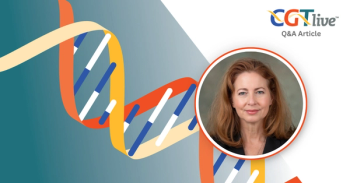
Commentary on Abstracts #1535, #3354, and #3030
Increasing data suggest that rituximab may have activity in a variety of uncommon B-cell malignancies. Although earlier preliminary data suggested a high response rate in hairy cell leukemia (HCL) (Thomas et al: Blood 94:705a[abstract 3116], 1999), the complete response rate of 20% in patients who had previously failed cladribine (Leustatin) therapy reported by Nieva et al was considered disappointing (abstract #1535). A more promising approach to patients with refractory HCL is the BL-22 immunotoxin, in which anti-CD22 is linked to a Pseudomonas exotoxin (Kreitman et al: N Engl J Med 345:241-247, 2001). Of 16 patients treated on a phase I study who had failed at least one purine analog, 13 responded, including 11 complete remissions. At a median of 16 months, only three complete responders relapsed and these were successfully reinduced.
Increasing data suggest that rituximab may have activity in a variety of uncommon B-cell malignancies. Although earlier preliminary data suggested a high response rate in hairy cell leukemia (HCL) (Thomas et al: Blood 94:705a[abstract 3116], 1999), the complete response rate of 20% in patients who had previously failed cladribine (Leustatin) therapy reported by Nieva et al was considered disappointing (abstract #1535). A more promising approach to patients with refractory HCL is the BL-22 immunotoxin, in which anti-CD22 is linked to a Pseudomonas exotoxin (Kreitman et al: N Engl J Med 345:241-247, 2001). Of 16 patients treated on a phase I study who had failed at least one purine analog, 13 responded, including 11 complete remissions. At a median of 16 months, only three complete responders relapsed and these were successfully reinduced.
Marginal zone NHL is a group of indolent NHLs that includes splenic lymphoma with villous lymphocytes, extranodal and nodal mucosa-associated lymphoid tissue (MALT), and monocytoid B-cell NHL. Other than antibiotic therapy for gastric MALTomas, there is no standard treatment for these disorders. Alkylating agents have been most widely used and small series suggest activity for nucleoside analogs. Conconi and coworkers (abstract #3354) presented their results on a series of 35 previously treated or untreated patients with extranodal marginal zone lymphoma who received rituximab single-agent therapy. The response rate was 50% CR and 74% overall. These impressive results should lead to additional testing of the antibody in this patient population.
Mantle cell lymphoma (MCL) is associated with the worst features of the indolent and aggressive NHL, with a median survival of 2.5 to 3 years and lack of cure. Standard CHOP-like regimens have had minimal impact on outcome. Rituximab has shown a modest level of activity in patients with MCL (Coiffier et al: Blood 92:1927-1932, 1998), yet results with the combination of CHOP and rituximab have not been encouraging (Howard et al: Blood 94:631a[abstract 2804], 1999).
Investigators from The University of Texas M. D. Anderson Cancer Center have published excellent results with the hyper-CVAD (cyclophosphamide, doxorubicin, vincristine, dexamethasone) regimen in patients with this malignancy (Khouri et al: J Clin Oncol 16:3803-3809, 1998), especially when followed by stem cell transplantation. In their next study, presented by Romaguera et al at ASH (abstract #3030), rituximab was used instead of stem cell transplant in patients who attained a CR with chemotherapy. The results were comparable to patients who underwent transplantation.
Newsletter
Stay at the forefront of cutting-edge science with CGT—your direct line to expert insights, breakthrough data, and real-time coverage of the latest advancements in cell and gene therapy.


















































